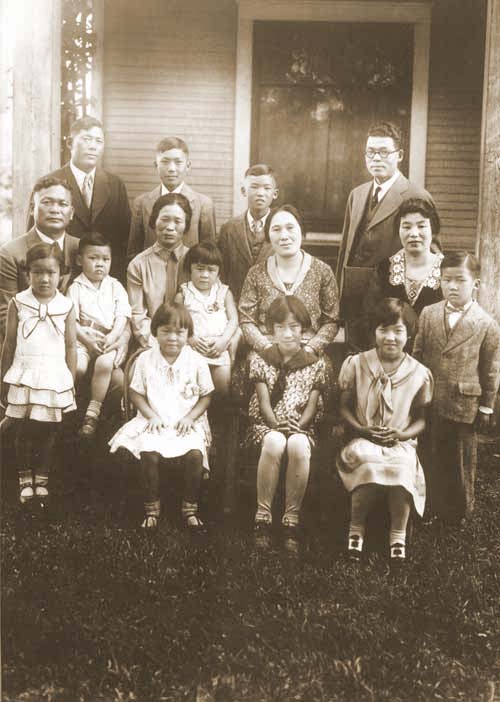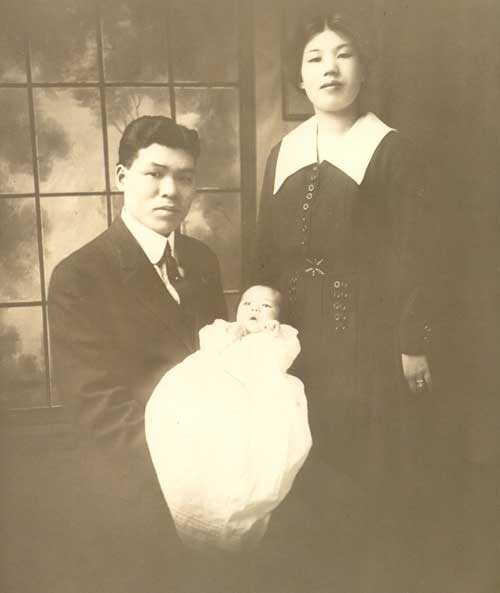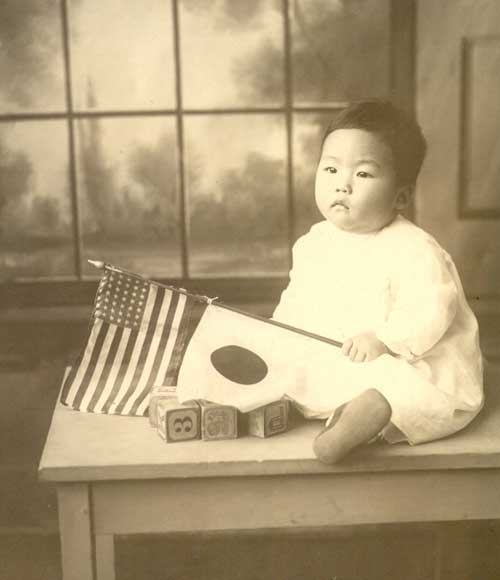Japanese American Pioneers and Settlers: Twin Falls' Early Nikkei Community
The Twin Falls-Jerome area had a small but significant Nikkei (Nikkei refers to persons of Japanese ancestry regardless of citizenship) community long before World War II and the establishment of the Minidoka Relocation Center. Japanese names common to the Magic Valley in the years before WWII included Koto, Gikiu, Yamagata, Mitani, Shiozawa, Morita, Morimoto, Tanaka, Ogata, Aizawa, Nakata, Joo, and Kawai.
Many of the men had first been employed as railroad laborers and then opened restaurants in railroad towns such as Shoshone while others sought opportunity in the newly established irrigation settlements springing up across southern Idaho. The subsequent success of the Nikkei community or Nihonjinkai(Nihon=Japan, jin=people, kai=community) demonstrated the effectiveness of Japanese mutual-support systems. According to historian Ronald Takaki, "Japanese farmers belonged to kenjinkai, prefectural- (ken) based social associations (kai). A kenjinkai brought its members or people (jin) together for social activities such as annual picnics; more importantly, it provided a network of social relations buttressing economic cooperation and assistance for employment, housing, and credit" (Takaki 1998: 193).
One of Twin Falls' earliest pioneer-businessmen and kenjinkai leader was Tojiro 'Tom' Koto who was born in 1885 in Fukuoka Prefecture, Kyushu Island, Japan. He immigrated to the United States in 1908, found employment first as a railroad construction laborer and then opened a restaurant in Weiser before moving to the fledgling irrigation settlement of Twin Falls. Tojiro Koto was married to Kai Sakamaki who was from the Saga Prefecture on Kyushu. Their first child, Tom, was born in 1917 in Twin Falls.
Tojiro Koto opened his first Twin Falls restaurant on Main Street where the 1st Security Bank is now located. In 1920 he built the Koto Building on Main Street. Koto offered customers living in a remote and rawboned irrigation town the rare luxury of elegant dining; Tom's Cafe was a first class restaurant complete with white tablecloths, excellent food served on elegant chinaware and a fish tank stocked with live trout.
But as Issei, first generation New year business card Japanese immigrants, Tojiro and Kai Koto were by law "aliens ineligible for citizenship" and not allowed to own property. Their son, Tom, was Nisei, second generation born in the United States and a citizen by birth and so deeds to the Koto properties were legally filed under Tom's name even though he was only 2 or 3 years old at the time. Koto lost his business and property during the Depression and was forced to move to Jerome where he and his wife leased a restaurant. In 1935, Tojiro died leaving behind a wife and two sons and a daughter.
During the 1920s, the Twin Falls Nikkei community maintained many traditional Japanese holidays and festivals such as Obon, the mid-August memorial observation venerating the spirits of ancestors. A Japanese school operated for several years during the summer months at Bickel School to provide opportunities for the children to study calligraphy, origami and music, as well as learn to speak Japanese and to read and write using the Kana-Kanji characters. Instructors for the school were often teachers brought over from Japan or from the Seattle, Tacoma or Portland Nihonmachi (Nihon=Japan, machi=town). Families from outlying areas boarded their children with friends and family living in town. Japanese cultural centers or schools such as this were actually quite common throughout the Pacific Northwest, as well as Hawaii, up until the beginning of WWII.
References:
Takaki, Ronald. 1998 Strangers From a Different Shore: A History of Asian Americans. Back Bay Books, Little, Brown and Co. New York.
Sims, Robert C. 1978 "The Japanese American Experience in Idaho". Idaho Yesterdays, Spring 1978:2-10 .
Go on to the WWII Incarceration page




